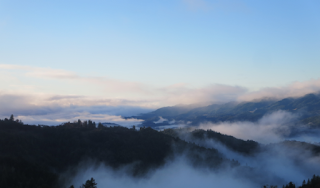Disclaimer: All names in this post have been changed, including that of Hidden Valley although the town is located in one of the U.S. States where marijuana is not prohibited at the state level. Any similarity to a real town named Hidden Valley is coincidental.
Hidden Valley is an unremarkable town in the rural parts of the state.
If you focus on the car's GPS display for too long, you miss the town, that's how small it is.
Like thousands of small American towns, it has a Main Street with a post office, a grocery shop, a gas station with a small attached auto repair shop, a hardware store, a motel, a bar and an assortment of boarded up businesses with weathered signs slowly decaying in the rain. The motor vehicles around here are primarily pick-up trucks and SUVs, with a few Prius hybrids thrown in. There is no obvious sign of wealth here. Brand new cars or new pick-up trucks don't mean anything in a country where flashy cars are available to almost anybody with a credit score above zero.
Like large swaths of the rural United States, Hidden Valley's economy used to be a mix of agriculture, lumber, and small scale mining until a slow and seemingly unstoppable decline set in in the last decades of the 20th century.
Young people fled the rural area for better education and job opportunities in the big city.
Then other young people and families from large cities on the coast or the state's own urban areas started to buy the cheap land in the surrounding area and began to grow marijuana. The War on Drugs as we know it followed swiftly. Raids by federal and state agencies became a fixture of local life in the months after the springtime flood of the local river subsided.
Like in the towns of rural Kentucky and elsewhere in the heydays of illicit alcohol production, local law enforcement both suppressed and profited from the illegal trade. If you are patient with the locals, you can hear stories of quick money, of heartbreak and episodes so hilarious that any Hollywood movie maker would jump on them.
Over time, local law enforcement took to separating the growers into good and bad criminals. Non-local troublemakers and people who polluted the streams and creeks became the focus of local law enforcement. If you quietly went about your business and stayed away from violence, chances were that the local sheriff would not only leave you alone but might even warn you of an impending raid by the FBI or the DEA.
Of course, the local sheriff would not turn down his share of money seized by the FBI or DEA as part of "asset forfeiture". If you did not understand the warning of a county trooper and the feds busted you the next day with your money, the cut for the sheriff's office was simply par for the course.
One grower tells of the sheriff paying a visit shortly after a raid by the feds in which they - as is the American standard - destroyed property and seized cash.
The sheriff offered to take care of any excess marijuana the grower had or would produce.
"So, you are offering me to sell my drugs?", the grower asked.
To which the sheriff replied: "That's not how I would call it. I'd call it crime prevention".
The huge amounts of money generated in the county where Hidden Valley lies, come from the surrounding hills and valleys. The inconspicuous, frequently unmarked and generally unpaved roads leading away from the main road take you into the heart of an industry worth several hundred millions of dollars. Most of the product goes to legal outlets, either shops for recreational or medical marijuana. A substantial portion still goes to states where growing is prohibited, and it appears to be the latter portion of the product that is related to the relatively few instances of violence reported by the people of Hidden Valley.
No tourists ever come here. Clinging precariously on hill sides, snaking along ridge lines, it is on these roads that passing car drivers will wave in friendly acknowledgement of your presence or check out your vehicle to see if you are friend or foe.
Such roads can easily go on for forty or fifty miles, and if you need to understand why pick-ups and SUVs are prevalent in rural America, the first couple of miles of any such road will convince you.
Even though some of residents behind the fenced in and gated properties along the road could afford a Tesla or a Ferrari, such gems of modern car making would be trashed by the first few miles of serious potholes and ruts.
The marijuana growing business in Hidden Valley has kept the town attractive to its young people, and many operations are now in the hand of the second or even the third generation of the descendants of the first generation of growers. There also is some seasonal work for trimming and harvesting, often performed by itinerant youngsters or temporary people from urban areas.
Young people once again have the choice to stay or move to the city for a different life.
The blogster would like to thank the residents of Hidden Valley who opened their houses and shared their stories.
Here is a view from Ridge Road in Hidden Valley:
[Update] Minor style changes.

No comments:
Post a Comment